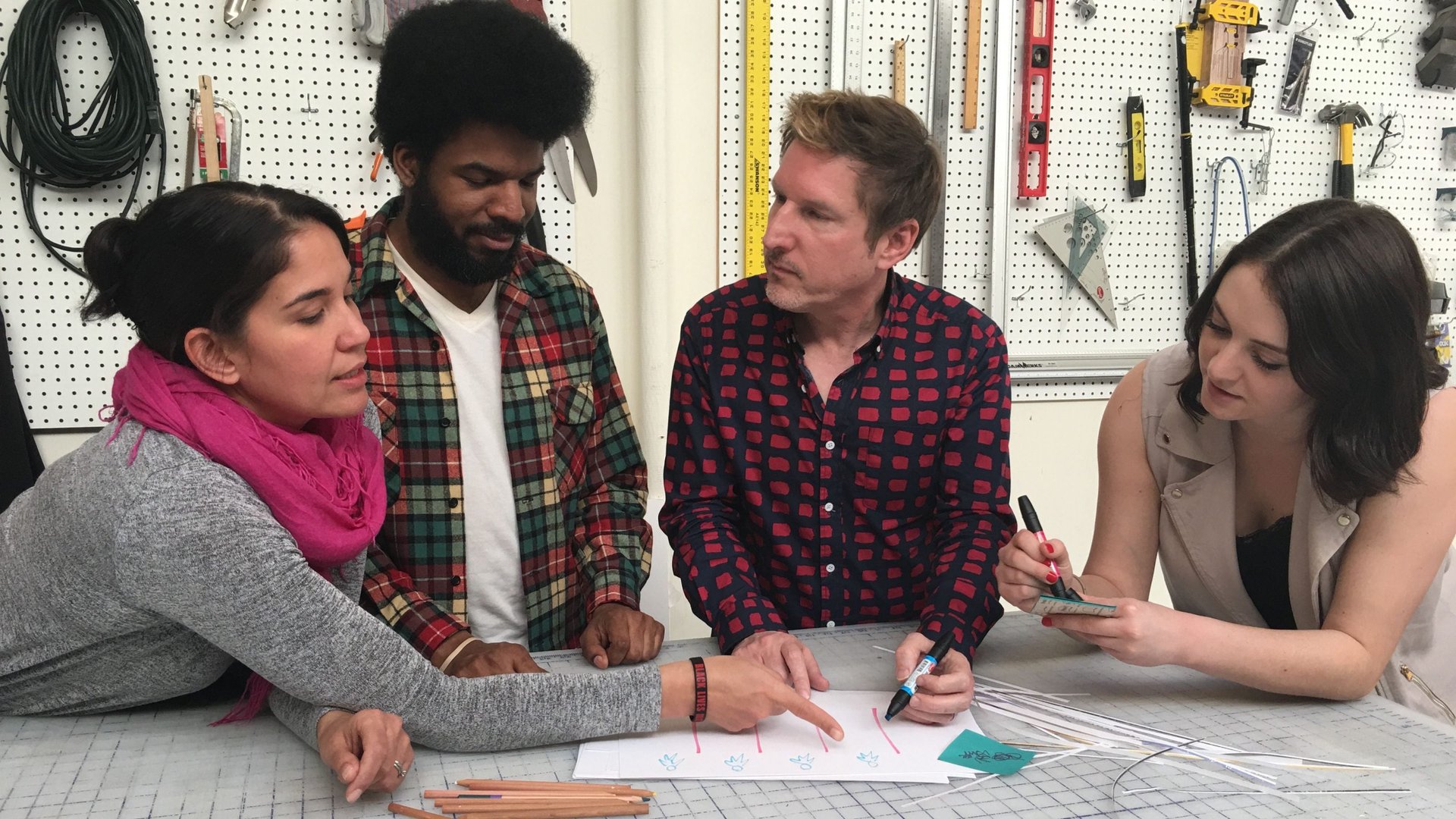Three words make brainstorming sessions at Google, Facebook, and IDEO more productive
Brainstorming can be a tricky business. There’s the awkward silence when your boss asks a far-fetched question and no one knows how to respond. The fear that you’ll toss out an idea only to draw blank stares. The collective sense of disappointment when the whole team wants to help, but can’t come up with anything new.


Brainstorming can be a tricky business. There’s the awkward silence when your boss asks a far-fetched question and no one knows how to respond. The fear that you’ll toss out an idea only to draw blank stares. The collective sense of disappointment when the whole team wants to help, but can’t come up with anything new.
To avoid these pitfalls, the design firm IDEO has developed a brainstorming strategy that relies on three simple words: the phrase “How might we.”
At a recent creative leadership class at the firm’s office in New York City, put on by Adobe’s 99U conference, nearly every question was framed as a “How might we,” or HMW: How might we make our teams more engaged? How might we foster deeper relationships between employees? How might we inspire more frequent knowledge-sharing? The same approach is popular at Google and Facebook, according to the Harvard Business Review.
While the phrase “How might we” seems pretty basic, each word is intended to serve a specific purpose. “How” asks employees to be descriptive, “might” suggests there are good answers, but not a single correct answer, and “we” evokes inclusivity and teamwork, says Duane Bray, IDEO’s global head of talent.
“When our clients come to us, they’ve often been staring at a problem saying, ‘I don’t know,’ for a long time,” he says. “HMW questions are freeing amidst uncertainty because they allow clients to mentally reset, and reframe a problem as an opportunity.” The word “might” encourages people to enter into discussions with a sense of optimism, pushing them to see the possibilities in any challenge.
This strategy has the stamp of approval from Jean Greaves, an organizational psychologist and CEO of TalentSmart, where she advises C-suite executives on emotional intelligence. Asking “How would we do this” or “How do we do this” can give employees performance anxiety, she says: People may stay silent for fear of giving half-baked or incorrect answers.
By contrast, “the beauty of the phrase ‘How might we do this’ is that it eliminates fear, stress, and anxiety by supportively implying that there may be more than one solution, and that nothing more is needed at the moment than ideas,” says Greaves. “This is the language that primes our mind for having fun exploring, and pushing beyond what’s already known.”
IDEO’s Bray adds that the goal of the process is “to generate as many ideas as possible so as to add constraints or filters down road,” he says. The phrase “how might we” signals that risky or outlandish ideas are welcome. And it’s far easier to reign in crazy ideas than to make cautious, mediocre ideas more interesting.
Equally important is asking questions that will actually spark a productive conversation. ”You want to avoid questions that are so specific only a few answers exist, as well as questions that are so broad it’s hard for people to stay on track,” Bray explains. The true test of a good HMW question is whether it sparks immediate ideas. The question “How might we solve world peace?” Way too big. But “How might we create a more peaceful office environment?” is bound to produce some specific suggestions.
Lastly, IDEO has a strategy to ensure that people at all levels of a company are empowered to contribute to the conversation. After an HMW question is asked, the firm asks participants to spend a few minutes jotting down their thoughts on a Post-it note. This empowers the discussion leaders to call on anyone in the room, rather than relying on the boss to speak first and set the course of the conversation for the rest of the session.
“Ultimately, the best ideas come when we build on one another’s propositions,” says Bray, “but this requires active listening, not jockeying for your turn to speak.”